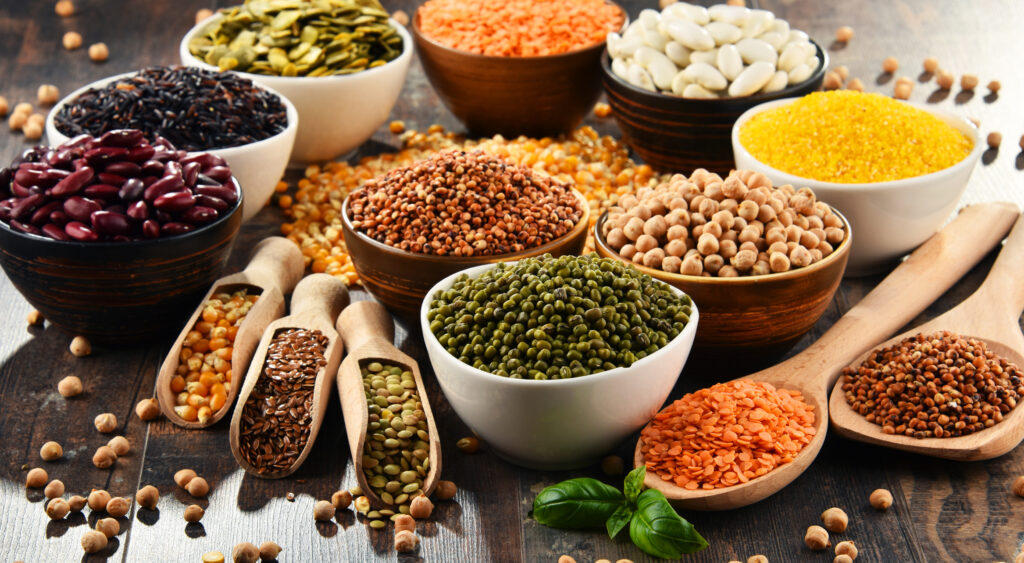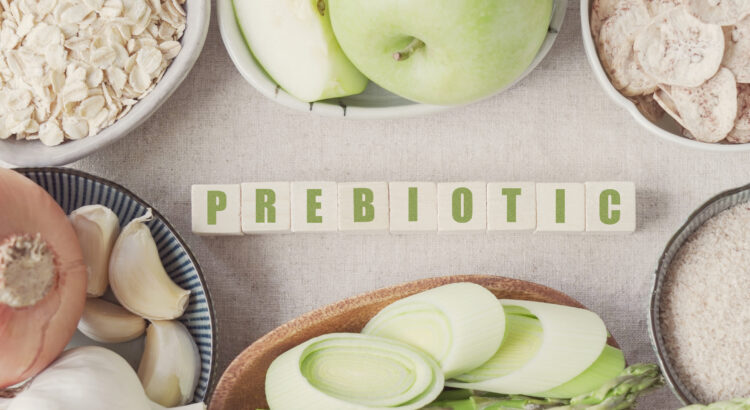There has been a lot of research in recent years regarding gut health and the importance of our gut microbiome. Having an appropriate balance of gut bacteria is so important for the health of our bodies. Most people have heard of probiotics, the “good bacteria” that need to reside in our guts to keep us healthy, but do you know what prebiotics are? Prebiotics are essentially food that feed the “good guys” and keep them thriving. Today we will discuss what types of food contain prebiotics, what the health benefits are of consuming prebiotics, and list some examples of prebiotic foods to include in your diet to ensure that your gut microbiome stays in balance.

Dietary Fiber
I’m sure you’ve heard how important dietary fiber is for our bodies. A specific type of fiber, known as insoluble fiber, resists digestion in the small intestine. It then passes through to the large intestine where it is fermented by gut bacteria and can act as a source of food, helping our good bacteria to thrive. So increasing your consumption of insoluble fiber is the best way to reap the benefits of prebiotics.
Foods That Contain Prebiotics
Foods rich in prebiotics include a variety of whole grains, legumes, fruit, and vegetables. Some specific foods that are particularly high in prebiotics include:
- Garlic
- Onions
- Bananas
- Apples
- Oats
- Asparagus
- Dandelion greens
- Beans
- Flaxseeds

Health Benefits
Since having a healthy gut microbiome is important for many aspects of our health, there are numerous benefits to consuming food that contains prebiotics. Some of these include:
- Improvement of many digestive issues
- Less stress, anxiety, and depression
- Helps to prevent blood sugar spikes
- Supports your immune system
- Reduces risk of developing colon cancer
- Supports heart health
Are There Any Downsides To Prebiotics?
Some people may actually experience negative digestive symptoms when they consume certain types of prebiotic rich foods, such as intestinal discomfort, gas, or bloating. Since prebiotics are fermented by gut bacteria, this process produces some gas. Sometimes it may just take our bodies and our microbiota time to adjust to increasing the amount of insoluble fiber in our diet, so increasing your intake slowly over time is advised. Other times, experiencing these digestive symptoms from prebiotic foods can happen if one already has an imbalance of gut bacteria, which is known as gut dysbiosis. So if you experience a lot of gas, bloating, or abdominal discomfort when you eat these types of foods, even in small amounts, you may want to limit your intake for the time being and investigate a possible deeper cause. It may be helpful to shift your gut microbiota balance a bit in other ways first before increasing your intake of food high in prebiotics.
